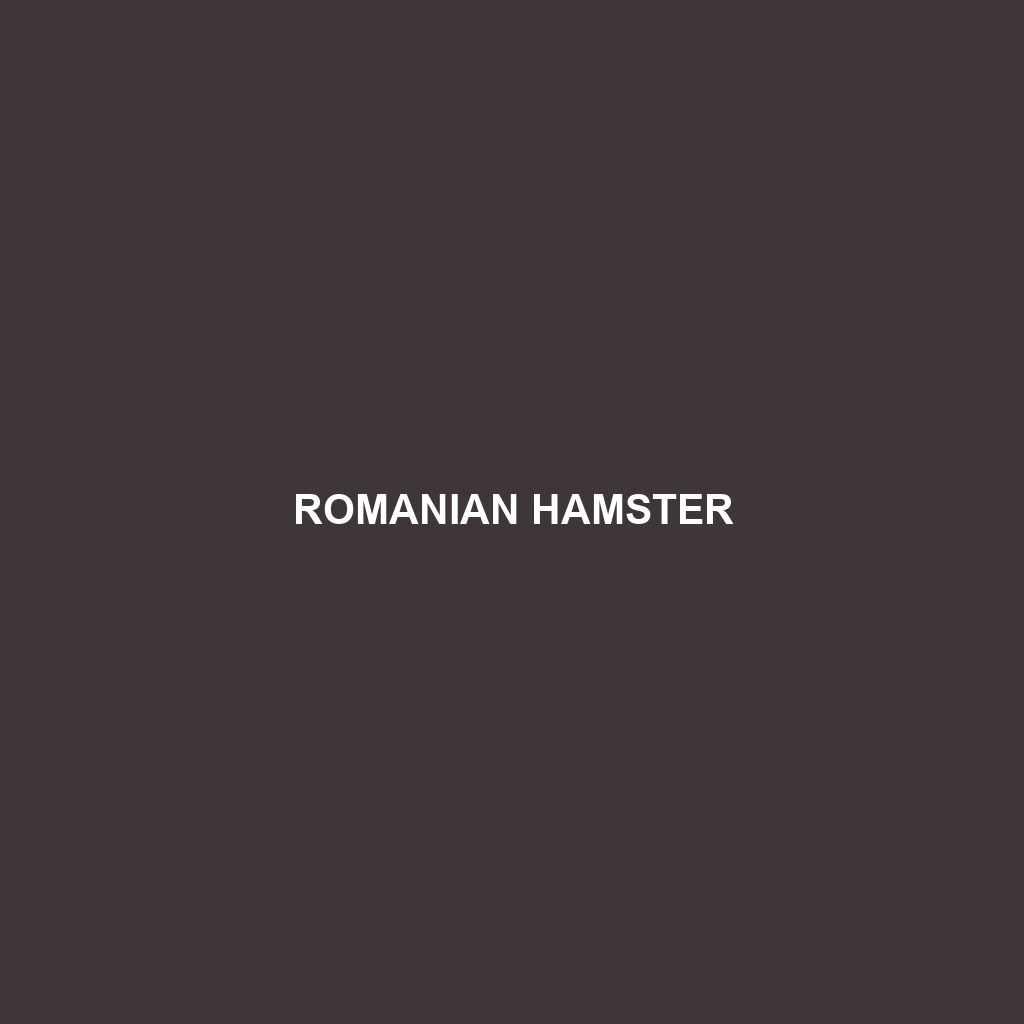Romanian Hamster Species Description
Common Name: Romanian Hamster
Scientific Name: Mesocricetus newtoni
Habitat
The Romanian Hamster is primarily found in the temperate grasslands and agricultural fields of Romania. This species thrives in well-drained soils, particularly in regions where there is abundant vegetation. Their preferred habitats typically include open grasslands, steppes, and areas with sparse bushes, providing them with both shelter and food sources.
Physical Characteristics
Romanian Hamsters are small rodents, typically ranging from 10 to 15 centimeters in length. They possess a robust body with short legs and a distinctive rounded face adorned with large, expressive eyes. The fur is generally sandy or light brown with white or cream underbellies, providing excellent camouflage in their natural habitat. Their cheek pouches are well-developed, allowing them to store food, which adds to their unique physical attributes.
Behavior
Romanian Hamsters are primarily nocturnal, exhibiting most of their activities at night. They are known for their burrowing behaviors, which they use to create intricate tunnels for nesting and storage. Socially, they are generally solitary animals, coming together only for mating, which can lead to territorial disputes among males. Their curious nature often leads them to explore their surroundings, making them interesting subjects for observation.
Diet
The diet of the Romanian Hamster predominantly consists of seeds, grains, fruits, and vegetables. They are opportunistic feeders, often foraging for food in their native habitat. During certain seasons, they may also consume insects for protein. Their foraging habits are crucial, as they tend to store excess food in their burrows, which aids in their survival during harsher conditions.
Reproduction
Romanian Hamsters have a reproductive cycle characterized by a breeding season from late spring to early summer. Female hamsters typically give birth to a litter of 5 to 10 young after a gestation period of about 16 to 18 days. The offspring are born blind and helpless, relying entirely on their mother for nourishment and care until they are able to fend for themselves.
Conservation Status
Currently, the Romanian Hamster is classified as “Vulnerable” due to habitat loss and agricultural expansion in its native range. Conservation efforts are critical to ensure that this species can thrive in its natural environment amidst growing threats.
Interesting Facts
– Romanian Hamsters are known for their impressive burrowing capabilities, digging extensive networks of tunnels underground.
– Unlike many rodents, they can store food in their cheek pouches, allowing them to transport food back to their burrow efficiently.
– This species has become popular in the pet trade, although it is crucial to advocate for ethical breeding practices to ensure their wild populations are not further threatened.
Role in Ecosystem
As herbivores, Romanian Hamsters play a significant role in their ecosystem by acting as seed dispersers, contributing to the growth of plant communities. Their burrowing activities also aerate the soil, enhancing its health and contributing to the stability of grassland habitats. Additionally, they are a food source for various predators, thus maintaining the balance within the food web.
